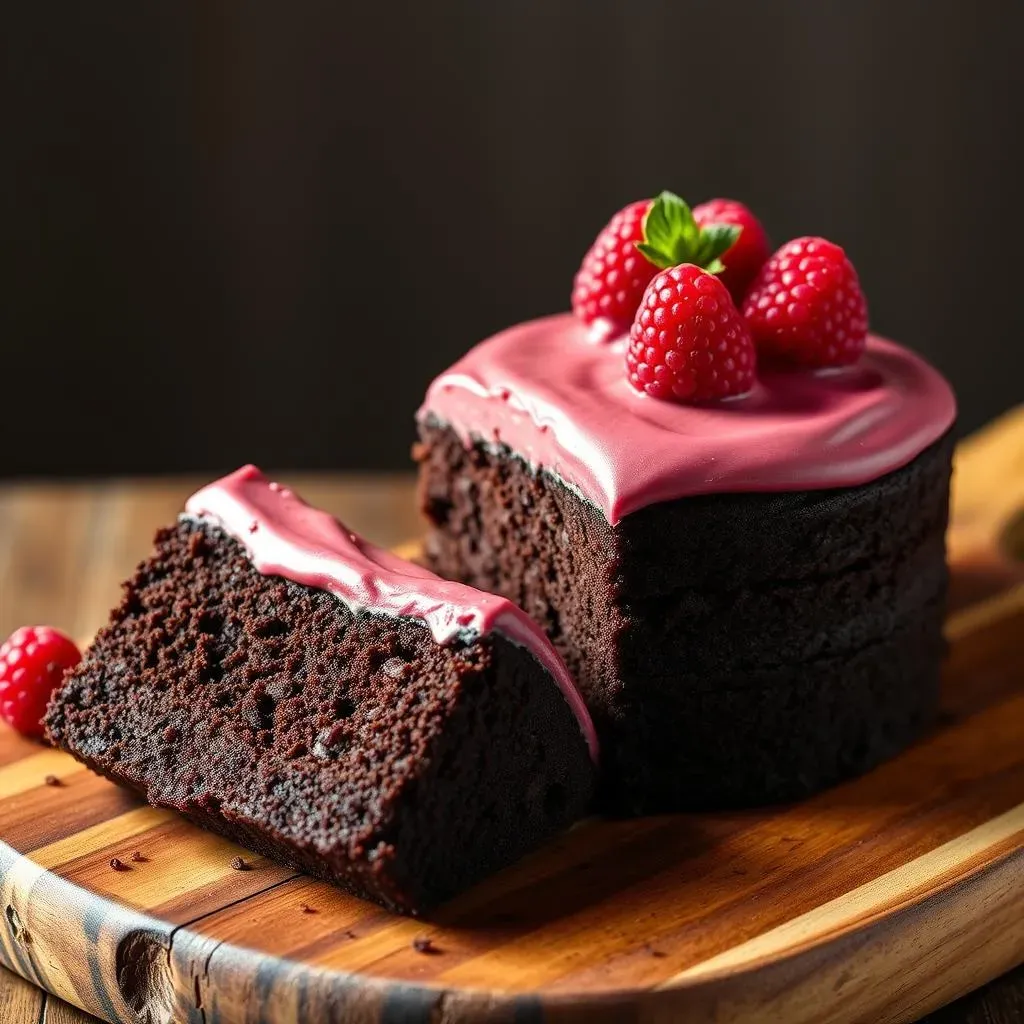Table of Contents
Ever wondered, "Do keto cakes have sugar?" The answer isn't a simple yes or no. The ketogenic diet, known for its low-carb, high-fat approach, often sparks curiosity about desserts. Can you truly enjoy cake while sticking to your macros? This article explores the fascinating world of keto baking, specifically addressing the question of sugar in keto cakes. We'll unravel the mysteries of sugar substitutes used in keto-friendly recipes, providing you with a clear understanding of the nutritional breakdown of these delicious treats. We'll delve into the specifics, examining how much sugar (or sugar alternatives) is actually present in a typical keto cake. Finally, we'll empower you with practical tips and tricks for baking your own sugar-free keto cakes at home, ensuring you can indulge in guilt-free sweetness. Prepare to discover the delightful truth about keto cakes and sugar – it might surprise you!
Understanding Keto and Sugar: Do Keto Cakes Have Sugar?
Understanding Keto and Sugar: Do Keto Cakes Have Sugar?
So, you're diving into the world of keto baking, huh? It's a delicious adventure! The core of the keto diet is drastically reducing carbohydrate intake to force your body to burn fat for energy. This means saying "buh-bye" to most traditional cakes, which are loaded with sugar and flour – both major carb culprits. But fear not, fellow author! The magic of keto lies in clever substitutions. We're not talking about tasteless, cardboard-like cakes. Instead, think rich, decadent treats made with alternative flours (like almond or coconut flour) and sugar substitutes (like erythritol or monk fruit). These swaps help keep the carb count low, allowing you to enjoy a slice of cake without derailing your keto journey. But remember, even with these swaps, moderation is key! A tiny piece of keto cake is a treat, not a meal replacement. Too much of anything, even keto-friendly treats, can still throw off your macros. Want to learn more about keto-friendly alternatives? Check out our guide on keto cakes for diabetics – it's packed with delicious insights!
Ingredient | Traditional Cake | Keto Cake |
|---|---|---|
Flour | Wheat Flour (High Carb) | Almond Flour, Coconut Flour (Low Carb) |
Sweetener | Sugar (High Carb) | Erythritol, Monk Fruit (Low Carb) |
Think of it like this: traditional cakes are like a sugary rollercoaster, a wild ride of carbs and sugar. Keto cakes, on the other hand, are more like a gentle stroll through a beautiful garden – still sweet, but far more sustainable for your keto goals. It’s all about mindful choices and understanding the impact of different ingredients. For example, did you know that even seemingly innocuous ingredients like certain fruit purees can sneakily add carbs? That's why carefully checking nutrition labels is a must! Another great resource is our post on is cake keto-friendly. It has some great tips.
- Read nutrition labels carefully.
- Choose low-carb sweeteners.
- Use alternative flours.
- Moderation is key!
Sugar Substitutes in Keto Cakes: A Closer Look
Sugar Substitutes in Keto Cakes: A Closer Look
Okay, let's talk sugar substitutes! They're the unsung heroes of keto baking. Without them, keto cakes would taste, well, let's just say "less than ideal." The most popular choices are erythritol, monk fruit, and allulose. Erythritol is a sugar alcohol that's pretty much calorie-free and doesn't significantly impact blood sugar. Monk fruit, derived from a type of melon, is incredibly sweet, requiring less to achieve the same sweetness level as sugar. Allulose, another sugar alcohol, is also low in calories and has a minimal effect on blood sugar. But here's the deal: each has its own quirks. Some people find erythritol can have a slight cooling effect, while others are sensitive to sugar alcohols in general, experiencing digestive upset. It’s always best to start with small amounts and see how you react. Want to know more about different sweeteners? Check out our guide on Keto Sweeteners!
- Erythritol: Low-calorie, minimal blood sugar impact, may have a cooling aftertaste.
- Monk Fruit: Very sweet, low-calorie, minimal blood sugar impact.
- Allulose: Low-calorie, minimal blood sugar impact.
Beyond those big three, you'll also find stevia and xylitol popping up in keto recipes. Stevia, a natural sweetener from the stevia plant, is intensely sweet, so a little goes a long way. Xylitol, another sugar alcohol, is quite sweet, but some people find it gives baked goods a slightly odd texture. It's worth experimenting to see which ones you like best and which ones work well in various recipes. Remember, even with these low-carb sweeteners, it’s still important to keep an eye on your overall carb intake. Overdoing it on any sweetener, even a keto-friendly one, can impact your ketosis. Our article on how much sugar on keto offers more info!
Sweetener | Sweetness Level (compared to sugar) | Potential Side Effects |
|---|---|---|
Erythritol | 70-80% | Cooling aftertaste, digestive upset in some |
Monk Fruit | 150-300% | Rarely causes side effects |
Allulose | 70% | Minimal side effects |
Stevia | 200-300% | Slightly bitter aftertaste for some |
Xylitol | 100% | Digestive upset, toxic to dogs |
The Nutritional Breakdown: How Much Sugar is in a Keto Cake?
The Nutritional Breakdown: How Much Sugar is in a Keto Cake?
Deciphering the Labels: What to Look For
Okay, let's get down to the nitty-gritty: how much sugar is *actually* in a keto cake? The answer depends entirely on the recipe. Forget about traditional cakes; those are sugar bombs! Keto cakes, however, use sugar substitutes, drastically reducing the sugar content. But, "sugar-free" doesn't always mean zero sugar. Many keto recipes still contain small amounts of naturally occurring sugars from ingredients like berries or nut flours, although the amount is usually negligible. The key is to carefully examine nutrition labels. Look for "net carbs," which subtract fiber from total carbs, giving a more accurate picture of the carbs your body will absorb. You'll also want to check the serving size, because a small slice will have far fewer carbs than a whole cake.
Don't get tricked by marketing claims! Some products might boast "keto-friendly" but still have a surprising amount of hidden sugar. Always double-check the nutrition facts. For example, some keto cake mixes might include sugar alcohols, which contribute to the total carb count. Understanding these nuances helps you make informed choices. To help with those choices, check out our guide on keto cakes for diabetics – it's full of helpful info!
Nutritional Information (per serving) | Traditional Cake | Keto Cake (Example) |
|---|---|---|
Total Carbs | 30-40g | 5-10g |
Sugar | 15-25g | 1-3g (from sugar alcohols or natural sources) |
Net Carbs | 25-35g | 2-8g |
Carb Counting and Macro Management
The amount of sugar in a keto cake is really just one piece of the puzzle. It's important to consider your overall macro intake. The keto diet usually focuses on keeping net carbs under 20-50 grams per day. Therefore, even a low-sugar keto cake can still significantly impact your daily carb allowance. The size of your slice matters a great deal. A small piece of cake might be perfectly fine within your macros, but a large slice could easily derail your progress. It's all about balance and making mindful choices.
Remember, the keto diet is a personalized journey. What works for one person might not work for another. The key is to find a balance that aligns with your goals and preferences. Our article on eating cake on keto might help you plan out your macros!
- Track your macros carefully.
- Adjust serving sizes to fit your daily carb limit.
- Listen to your body and adjust as needed.
Making Informed Choices: Keto Cake vs. Other Desserts
Compared to traditional cakes, keto cakes are significantly lower in sugar and overall carbs. However, it's important to remember that even keto-friendly options are still treats. They shouldn't be consumed in excess. The goal is to find a balance between enjoying delicious desserts and staying within your dietary guidelines. Think of keto cakes as an occasional indulgence, not a daily staple. Consider the nutritional profile of the specific cake you're choosing. Check the ingredients list for added sugars, sugar alcohols, and other potential carb sources.
Consider alternatives! If you're craving something sweet, explore other keto-friendly options, such as sugar-free pudding, berries with whipped cream, or chia seed pudding. Variety is key to staying on track and avoiding cravings! For more ideas, explore our post on is cake keto – it's full of great advice!
Baking Keto Cakes at Home: Tips and Tricks for SugarFree Success
Baking Keto Cakes at Home: Tips and Tricks for SugarFree Success
Mastering the Art of Keto Flour Substitutions
So, you're ready to bake your own keto cakes? Awesome! The first hurdle is finding the right flour substitute. Forget all-purpose flour; it's a carb overload. Instead, embrace almond flour and coconut flour – your new keto baking besties. Almond flour gives cakes a lovely, slightly nutty flavor and a tender crumb. Coconut flour, on the other hand, is super absorbent, so recipes often require a bit more liquid. Experiment to find your favorite! Don’t be afraid to mix and match; some recipes even use a blend of almond and coconut flour for the perfect texture.
Remember, different flours behave differently. Almond flour tends to create a more delicate cake, while coconut flour can result in a denser, almost bread-like texture. It's all part of the fun of experimentation! Need more ideas? Check out our guide on Kodiak Cakes and Keto for more flour options.
- Almond flour: Delicate crumb, slightly nutty flavor.
- Coconut flour: Dense texture, very absorbent.
- Experiment with blends for optimal results.
Sweetening Success: Choosing the Right Sugar Substitute
Next up: sweetness! Choosing the right sugar substitute is crucial for a delicious keto cake. Erythritol, monk fruit, and allulose are popular choices. Erythritol is a bit like sugar in its baking properties, but it might leave a slightly cool aftertaste for some. Monk fruit is super sweet, meaning you need less, but it can sometimes have a subtle licorice-like flavor. Allulose has a very mild flavor and is easy to use. Each has its strengths and weaknesses; experiment to find your preference.
Don't be afraid to experiment with combinations! Some bakers find that blending sweeteners creates a more balanced flavor profile. For instance, combining erythritol with monk fruit can often mitigate any lingering aftertastes. Remember to check nutrition labels meticulously. Some sweeteners, even keto-friendly ones, can still have a surprising number of carbs. For a more in-depth look at sweeteners, check out our post on keto sweeteners!
Sugar Substitute | Pros | Cons |
|---|---|---|
Erythritol | Similar baking properties to sugar | Cooling aftertaste for some |
Monk Fruit | Very sweet, little needed | Licorice-like aftertaste for some |
Allulose | Mild flavor | Can be expensive |
Troubleshooting and Tips for Keto Cake Perfection
Baking keto cakes can be tricky, but don't worry – practice makes perfect! One common issue is dryness. Keto cakes, because of the flour substitutes, can sometimes be a bit drier than traditional cakes. To combat this, add a touch of extra liquid, like unsweetened applesauce or a little extra milk or cream. Another tip is to not overbake. Overbaked cakes will be even drier. Use a toothpick test to check for doneness.
Don't be discouraged if your first attempt isn't perfect. Baking keto cakes is a learning process. Experiment with different recipes, ingredients, and techniques to find what works best for you. Remember, the goal is to create a delicious and satisfying keto-friendly treat. For more tips and inspiration, check out our article on Keto cake mixes vs homemade!
